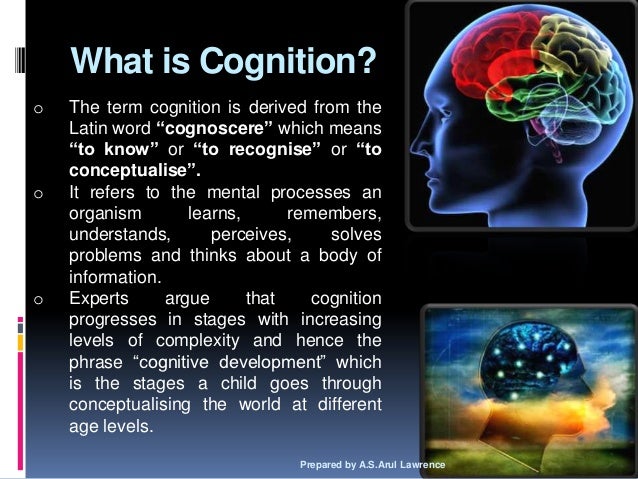

His book Purposive Behavior in Animals and Man in 1932 described research which behaviorism found difficult to explain. Interest in mental processes had been gradually restored through the work of Piaget and Tolman. The cognitive approach began to revolutionize psychology in the late 1950sand early 1960’s, to become the dominant approach (i.e., perspective) in psychology by the late 1970s. Output processes are responsible for preparing an appropriate response to a stimulus.Storage processes cover everything that happens to stimuli internally in the brain and can include coding and manipulation of the stimuli.Input processes are concerned with the analysis of the stimuli.Information processing models of cognitive processes such as memory and attention assume that mental processes follow a clear sequence. Research directions for further studies follow.Information processing in humans resembles that in computers, and is based onīased on transforming information, storing information and retrieving information from memory. The implications in theory in terms of the concepts of "intelligence" (i.e., general intelligence or multiple intelligences), "IQ testing" and "rationalistic or empiricist perspective" (i.e., genetic or environmental), and in practice regarding identification of gifted students are described. The model shows that unusual curiosity (on the activation level), creativity, intensity, comprehension (or learning or understanding), and retentiveness (on the performance level) belong to the common characteristics of gifted students for the domain-specific characteristics, there are practical-, social-, and ideal-relevant characteristics on the activation level and language-, number-, space-, visual-, auditory-, taste and olfactory-, and tactile-relevant characteristics on the performance level. The common and domain-specific abilities and observable characteristics of gifted students were conceptually analyzed in terms of interrelationships, and finally common and domain-specific characteristics of gifted students were identified and structured into a hierarchical model of the characteristics of gifted students. The domain-specific abilities consist of three abilities on the activation level and seven abilities on the performance level.


For the common abilities, there is an ability to find relationships between stimuli on the activation level, an ability to execute cognitive processes, and an ability to reason or process information (or stimuli). The conceptual analysis resulted in a hierarchical structural model of human abilities, which shows two levels of common and domain-specific abilities: activation level and performance level. The proposed common and domain-specific abilities in the major models were identified, compared and evaluated in terms of definitions or functions, and finally connected by interrelationships found between the abilities. The present study identified common and domain-specific characteristics of gifted students through a hierarchical structural model of human abilities that was established through integrating major models of human abilities by a conceptual analysis based on interrelationships between abilities.


 0 kommentar(er)
0 kommentar(er)
